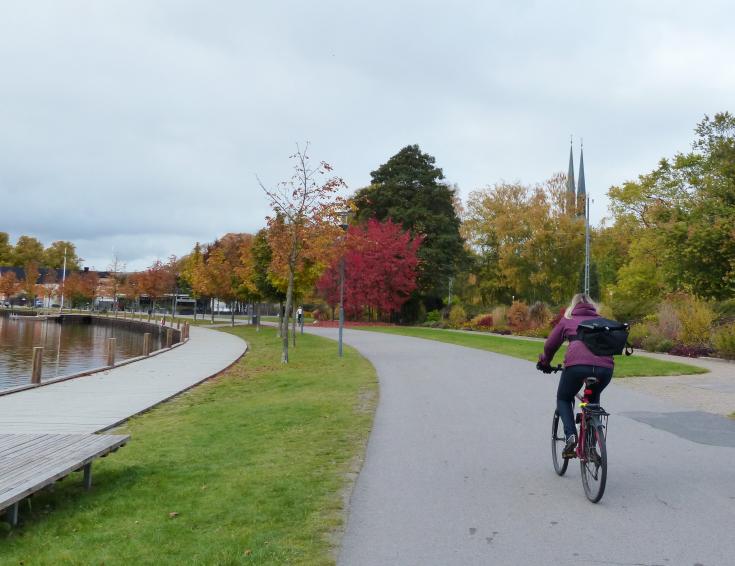Involving young people in mobility planning
On 29 June 2022, the Policy Learning Platform organised a matchmaking in Thessaloniki, Greece on the topic of how to involve young people in mobility planning. The session was organised at the request of the Centre for Research and Technology Hellas (CERTH) – Hellenic Institute of Transport (HIT)
Noting that the younger generation, who cannot yet vote, are not given a voice in decision-making, CERTH wanted to explore how to create a framework in Greece that can activate young people and engage them in planning, to ensure their specific challenges are being tackled, and to empower them to be active citizens, recognising their role in the low-carbon transition.
Peers
Alongside our experts, Katharina Krell and Simon Hunkin, peers from across Europe were invited to share with the host their good practice and recommendations.
-
Ghadir Pourhashem and Tatiana Kovacikova from the University of Zilina
-
Jan-Bendix Byhring and Lillian Jahr Oterholt from the Municipality of Lørenskog in Norway
-
Lamprini Tsoli from the Regional Development Fund of Central Macedonia
-
Marlene Mösle from the Hessen Trade & Invest GmbH, Germany
Access the full follow-up report to explore all key takeaways and follow-up actions.
Some key takeaways
It can improve local plans and enable more efficient spending of youth resources on the public sector side, but can also create leadership and learning opportunities, strengthen citizenship, and expose young people to career experience and opportunities in local government.
Young people need to be engaged as they are the ones who will be expected to drive change in the future, and they can breathe life into projects with new perspectives.
As explored in the MoTiV project, travel time is not equal for all. While it is often viewed as an inconvenience, and unproductive, it can be enjoyable and productive, and bring fitness benefits. Young people are more likely to focus on these benefits and are happy to make use of time to use electronic devices. Consider that young people view travel differently to travel planners.
With this in mind, small changes such as having free wi-fi on public transport or providing interactive applications that can gamify active transport and illustrate benefits (e.g., calories burned) can increase the value of travel experiences. This can also be an excellent way of collecting data, which is vital for planning. However, apps can be challenging to promote and to get people using every day. Where possible build on existing apps such as travel planning apps.
Lørenskog used the opportunity of a new Municipal Master Plan and school curriculum to involve young people in planning. The curriculum included a focus on democracy and citizenship, as well as sustainable development, and was seen as a strong way of involving young people, going via schools as a trusted intermediary, rather than trying to outreach directly as the municipality, or via private companies
Make use of communication channels and tools that are suitable and engaging for the audience. Applications, pictures, videos, drawings, and short essays are suitable tools, rather than complicated forms. It’s essential to ‘speak in a different mode’.
Engaging young people does not need to be resource intense, but the process starts with internal behaviour change and resource allocation, requiring a dedicated team behind it with the right skills and commitment. Lørenskog for example involved two full-time people working for three months only on engagement activities, with help from teachers in the schools.
2022-06-29 Matchmaking follow-up report on youth participation in mobility planning in Thessaloniki
Matchmaking follow-up report on youth participation in mobility planning

Request your matchmaking today!
Do you want to discuss your policy challenge with European peers during a two-hour session? Submit your request today!

